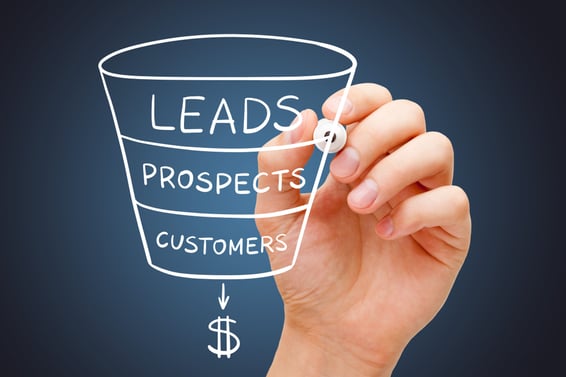
The marketing world is full of industry-specific terms, like "conversion rate," "click-through rate," and "MQL" (to name just a few). Two of the most critical terms that marketers use, especially in their planning sessions, are sales funnel and customer journey.
Unfortunately, people throw around these terms without clear insight into their meanings. Even worse, they may be entirely misused and misapplied. Nevertheless, they are still vital concepts to grasp when reaching out to prospects and customers.
Let's talk about what each concept involves, how they overlap with each other, and why that's important for you to know.
What is Your Sales Funnel?
The "sales funnel" is a sequence of steps that consumers go through when transitioning from prospect to customer. It's a framework that allows you to effectively organize your sales and marketing efforts and engage with customers. In general, the sales funnel consists of 3 main stages:
- Awareness (Top of Funnel): This is the stage when prospects first become aware of your brand or the product you offer. At this point, they may begin to realize that they have a "pain point" you can fix or a need that you can fill.
- Consideration (Middle of Funnel): The consideration stage is when prospects are actively interested in your product or service and they're researching their available options.
- Decision (Bottom of Funnel): Finally, prospects in the decision stage are ready to make a purchase. If all goes well, they'll buy from your company, instead of the competition.
The sales funnel is a valuable methodology for marketing since it allows you to segment your content and tactics according to the stage in which the prospect currently resides.
What is Your Customer Journey?
The "customer journey" for your typical or ideal buyer is very similar to the sales funnel, illustrating a similar concept from a different perspective. You could think of it this way: the sales funnel helps you understand your marketing strategy, whereas the customer journey offers insight into how your buyers' motivations and preferences fit into that strategy.
The customer journey typically comprises five distinct phases:
- Awareness: The customer first becomes aware of a product or service.
- Research: The customer's interest in the product or service is piqued, and they begin researching it in more detail.
- Consideration: The customer is actively investigating their options to obtain the product or service by this point.
- Conversion: The customer makes a final purchase decision.
- Re-Purchase: Depending on the customer's experience and satisfaction level, they may decide to buy from the same brand again or try out a different company next time.
How Can They Work Together?
You can think of the sales funnel and customer journey as two sides of the same coin. You can make them work together for your business when you understand each customer's journey and then develop and distribute advertising content for the corresponding funnel stage.
For example, imagine that your company sells personal computers and laptops. Perhaps the first step in the customer's journey would be their realization that: "My laptop is getting old. Its processing speed is slowing down. I may need to buy a new one soon." In response, you would develop marketing content for your new laptops based on attributes the customer finds attractive (pricing, features, processing speed, warranty, and so forth).
As the customer does their research and moves into the consideration phase of their journey, you would likely want to publish information demonstrating why they should buy from your company instead of your competition. You could differentiate based on several factors, including price, quality, service, or tech support.
Finally, the customer will reach the conversion phase of their journey (which is also the sales funnel's decision stage). At this point, you'll want to leverage marketing materials that will close the sale. They may include special promotions and discounts, extended warranties, and various other enticing offers. If the customer buys from your brand and is completely satisfied with their purchase, you can expect them to come back the next time they need a laptop.
As you can see, the sales funnel, and the customer journey fit "hand in glove" with each other. Their areas of overlap include:
- Top of Funnel: Awareness, Research
- Middle of Funnel: Research, Consideration (research bridges the gap between the top and middle of the sales funnel)
- Bottom of Funnel: Conversion, Re-Purchase
Leverage Your Sales Funnel and Customer Journey to Grow Your Business
A clear understanding of your sales funnel, and customer journey and how they work together will help you develop a highly targeted approach to your advertising plan. You'll reach customers at the right time and with the right message.
Many businesses have found that working with an experienced media partner helps them successfully guide their customers to a final purchase (and re-purchase). In any event, continue to leverage these key concepts into an effective marketing plan and then follow through on that plan. If you do, expect to enjoy sustainable growth for your business.





